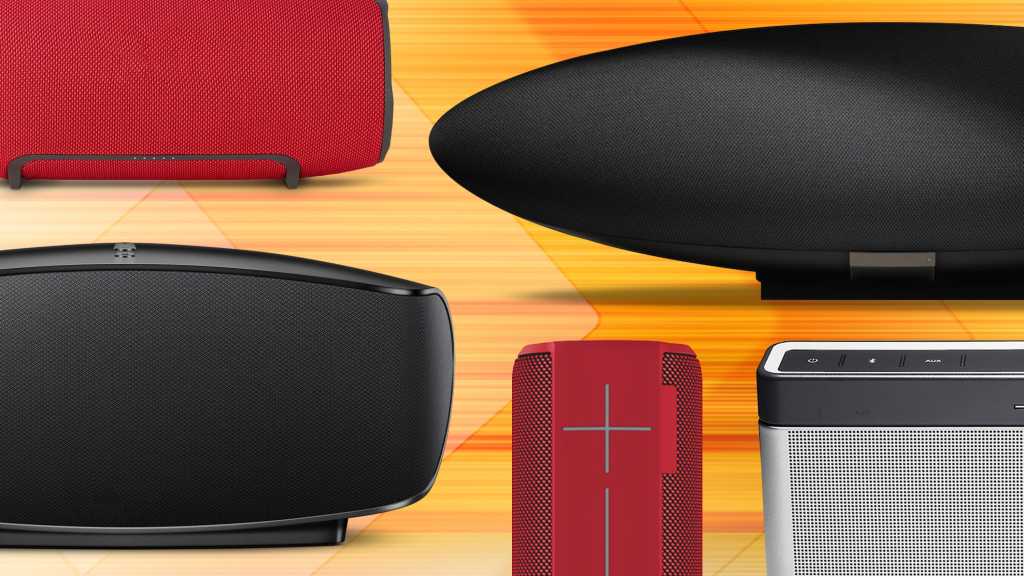No longer resembling jelly beans–cheap, virtually, and invariably of low quality–today’s best Bluetooth speakers deliver exceptionally good fidelity. That said, you’ll still encounter some clunkers, and that’s where we come in.
We’ve picked the best Bluetooth speakers in four price ranges: budget, mid-range, high-end, and price-is-no-object; and five use scenarios: outdoor, party, bookshelf, and indoor and outdoor smart speakers. Several of our picks can also operate on your Wi-Fi network.
Updated December 29, 2023 to add a link to our Brane X smart speaker review. The Sonos Move 2 is part of a richer ecosystem, and JBL’s indoor-only is hard to beat for its elegant industrial design, but the Brane X is an amazing portable smart speaker and earns its runner-up designation.
Bluetooth speakers earning our highest recommendation
Tronsmart T7 — Best budget Bluetooth speaker
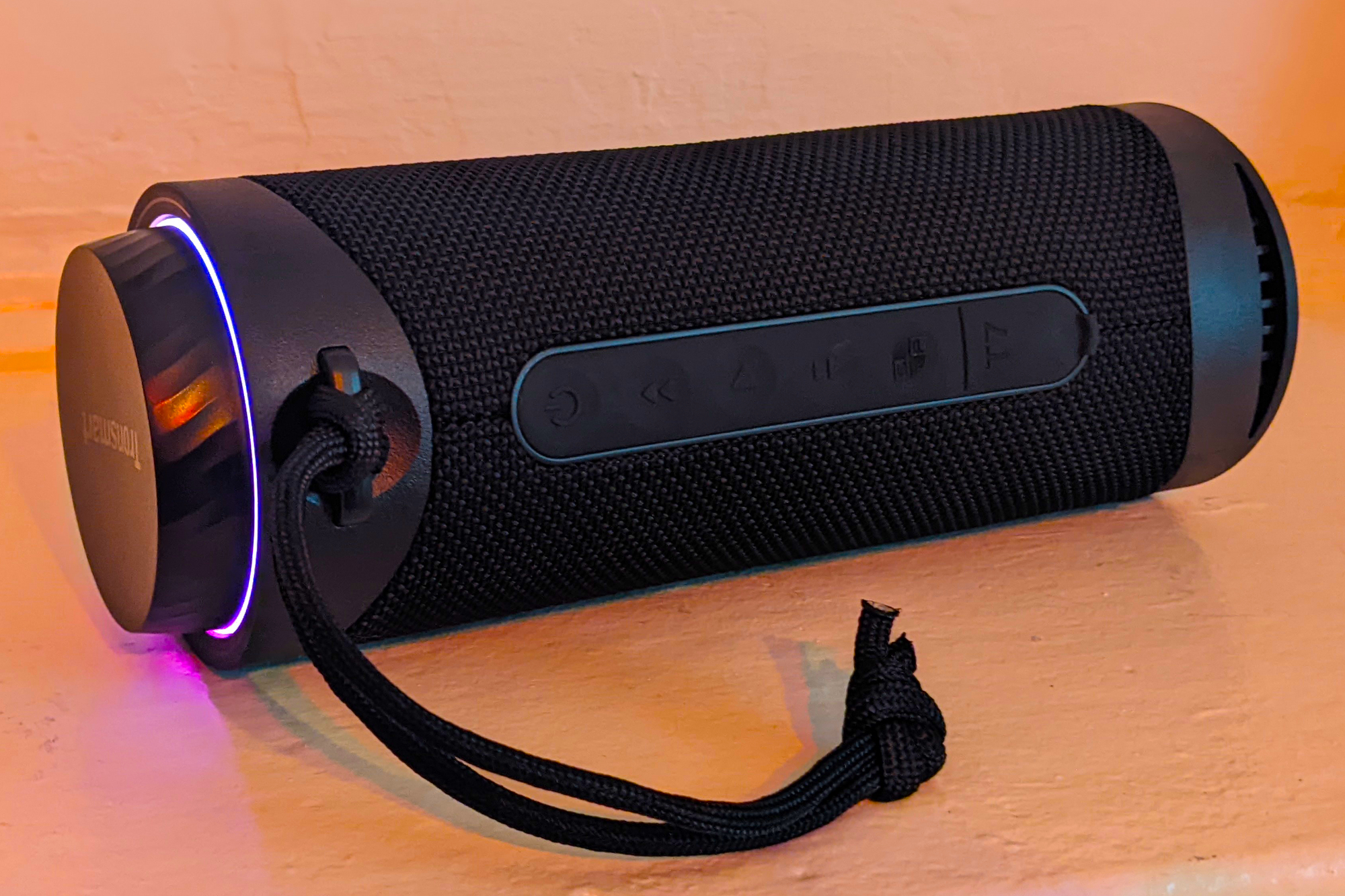
Pros
- Good, thumpy sound
- True Wireless Stereo (TWS)
- IPX7 weatherization
- Very modestly priced
Cons
- Supports only the SBC Bluetooth codec
- Not rated for particulate matter incursion
The Tronsmart T7 looks good, sounds good, will stand up to a bath, and is affordable enough to deploy in stereo pairs. Its IPX7 rating means it can withstand a dunk in the pool for up to 30 minutes, and while it’s not rated for particulate matter ingress, we wouldn’t have any qualms about taking it to a beach party.
EarFun UBoom L — Best budget Bluetooth speaker, runner-up
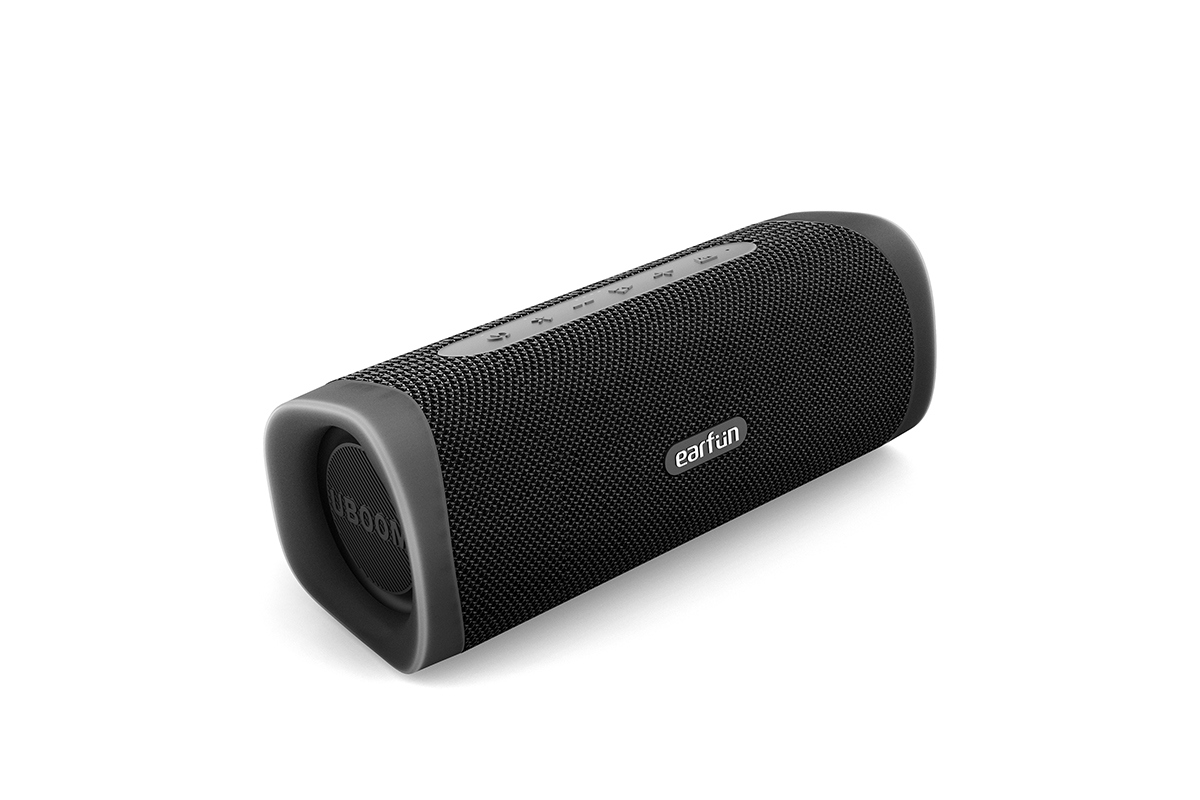
Pros
- Good overall sound
- Plenty of thump
- IP67 rated for complete protection from both dust and water
Cons
- Mid-range lacks a bit of definition
The EarFun UBoom L is a fun and punchy speaker that also happens to be completely weatherproof. Powered by a 14-watt-per-channel Class D amplifier driving a pair of 55mm full-range drivers (augmented by a passive radiator at each end), you can enjoy music at the beach or poolside without worry.
Marshall Middleton — Best mid-priced Bluetooth speaker
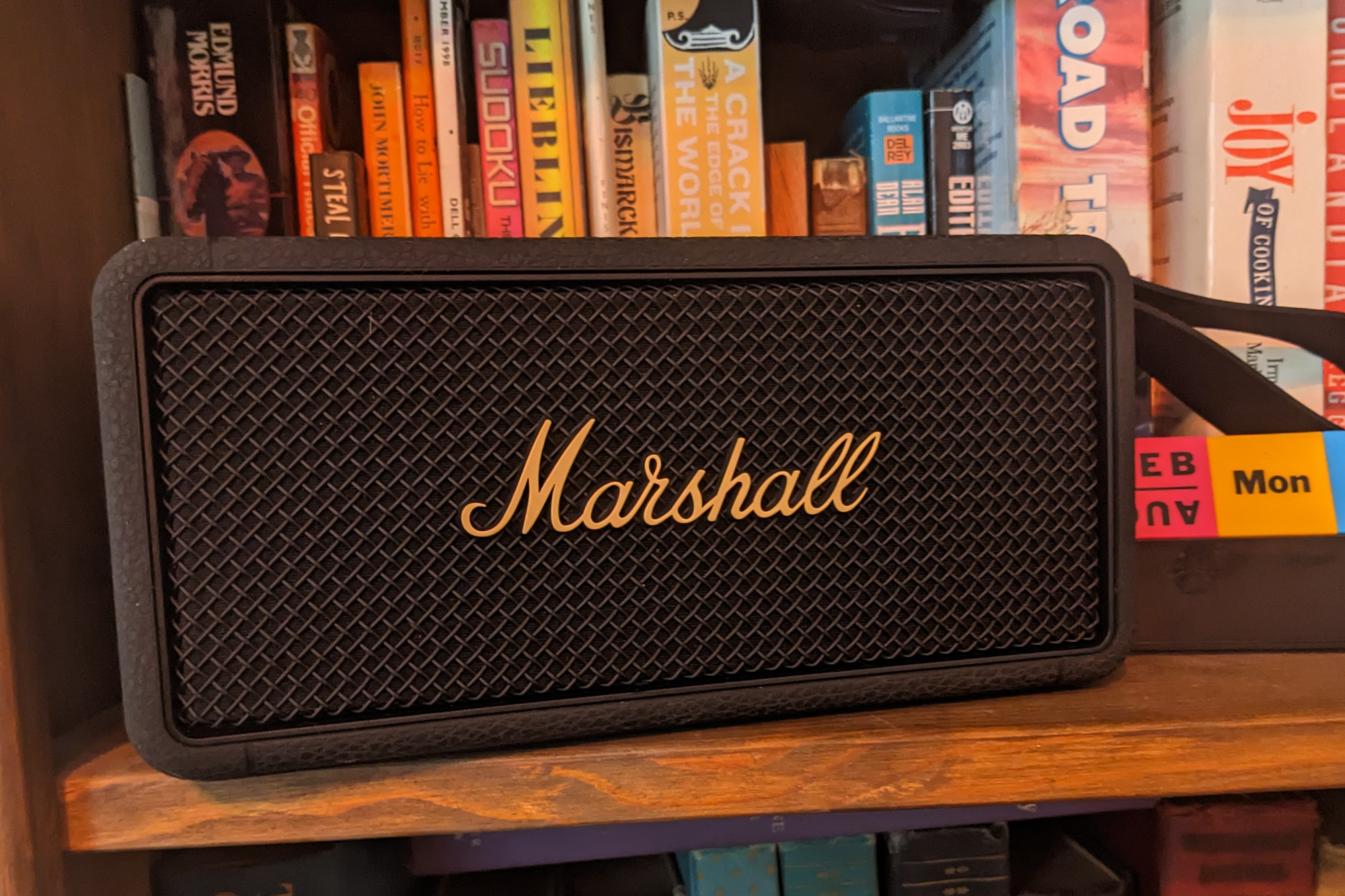
Pros
- Excellent clarity and separation
- Tight, punchy bass–and plenty of it
- IP67 protection from the elements
- 20-hour battery life
Cons
- Considerably more expensive than the competition in its class
If its hefty price tag isn’t a barrier for you, the Marshall Middleton is the best-sounding, mid-sized, portable Bluetooth speaker we’ve tested. It also carries an IP67 weatherization rating, which makes its superior sonics a minor miracle.
Soundcore Motion X600 — Best mid-priced Bluetooth speaker, runner-up
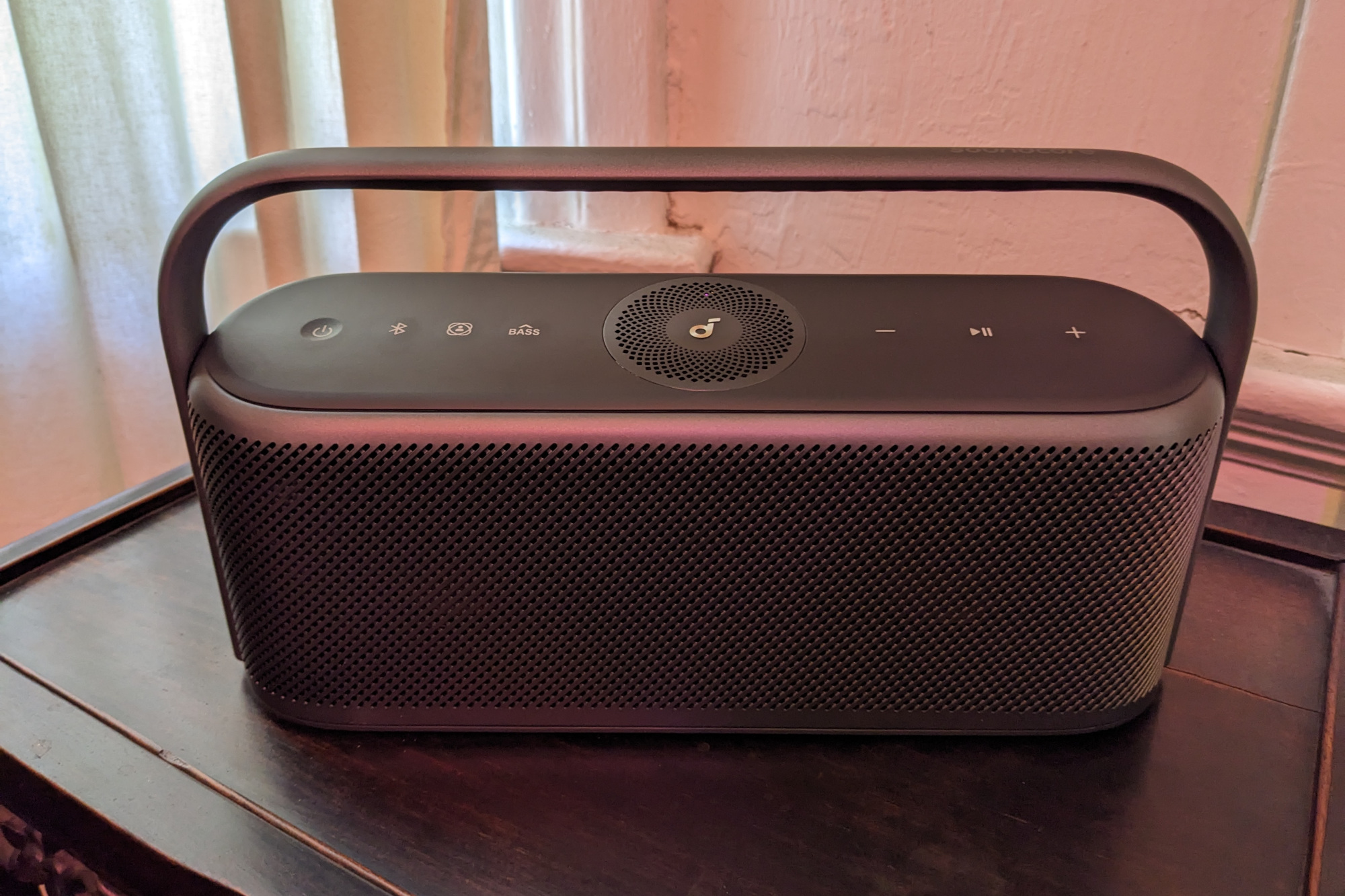
Pros
- Excellent sound
- Loud and thumpy when you want it to be
- IPX7 weatherization with rugged metal construction
- Supports the Hi-Res LDAC codec (on Android)
Cons
- Doesn't support the AAC codec
- A tad bulky for its size
Considering its high-fidelity renderings, the loud, thumpy, rugged, and thoroughly weatherized (IPX7) Soundcore Motion X600 is more than reasonably priced. Some of the competition charges a good deal more for this class of performance.
Sonos Move 2 — Best Bluetooth-capable portable smart speaker
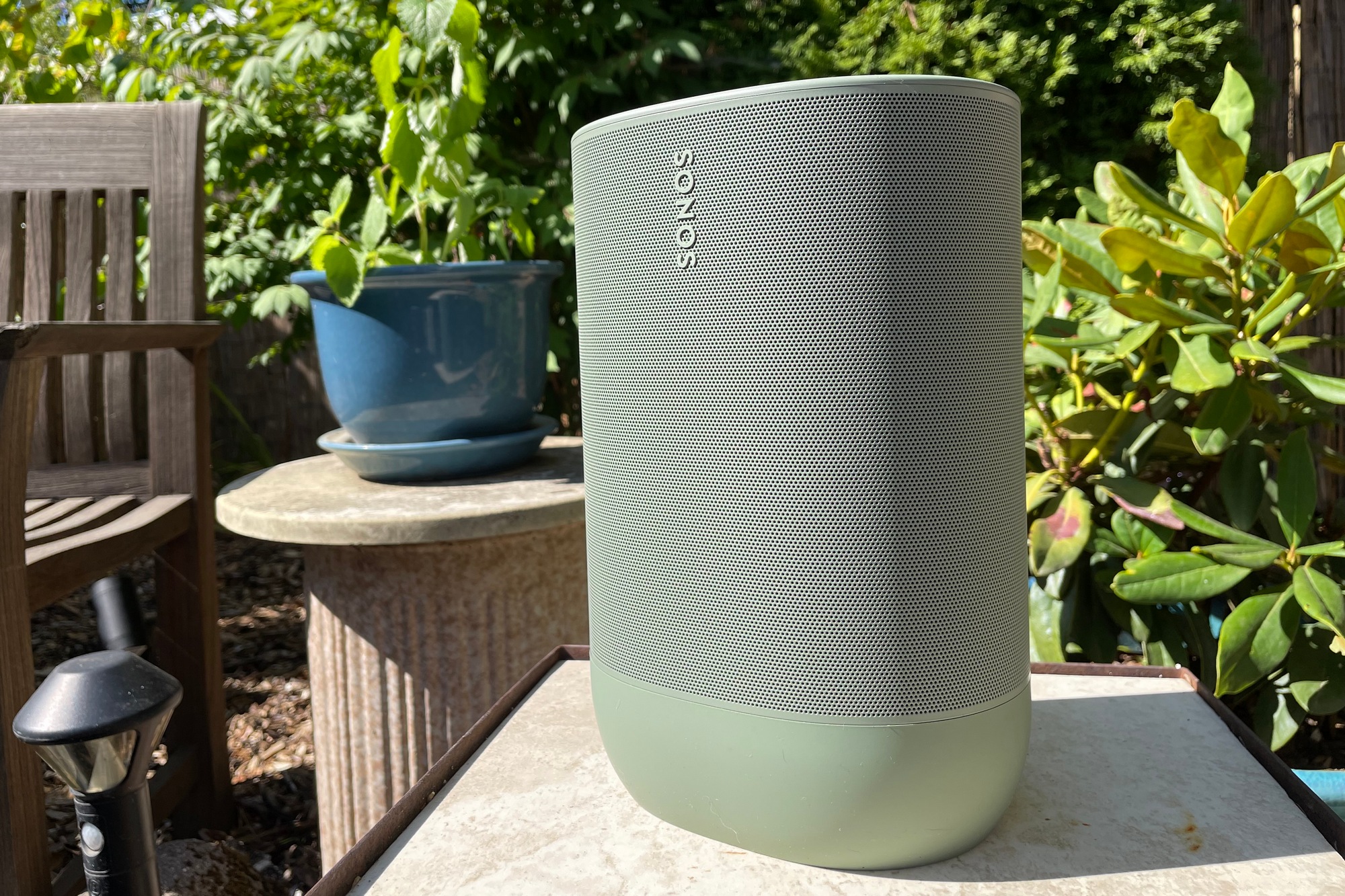
Pros
- Excellent audio performance—in stereo!
- Wi-Fi and Bluetooth connectivity—simultaneously!
- Very wide sound stage
- Incredibly long battery life
Cons
- Still no support for hi-res Bluetooth codecs
- Still best described as luggable
- $50 more expensive than the already pricey original
Sonos didn’t need to go back to the drawing board to design a better portable speaker, but I’m glad they did. The Move 2 sounds better than the original, produces a wider sound stage than the original, and offers twice as much battery life as the original. And those are just the top-line improvements. The Move 2 needs to be connected to your Wi-Fi network to operate as a smart speaker, but once configured, it can automatically transition from Bluetooth to Wi-Fi as soon as you’re within range.
Brane X — Best Bluetooth-capable portable smart speaker, runner-up
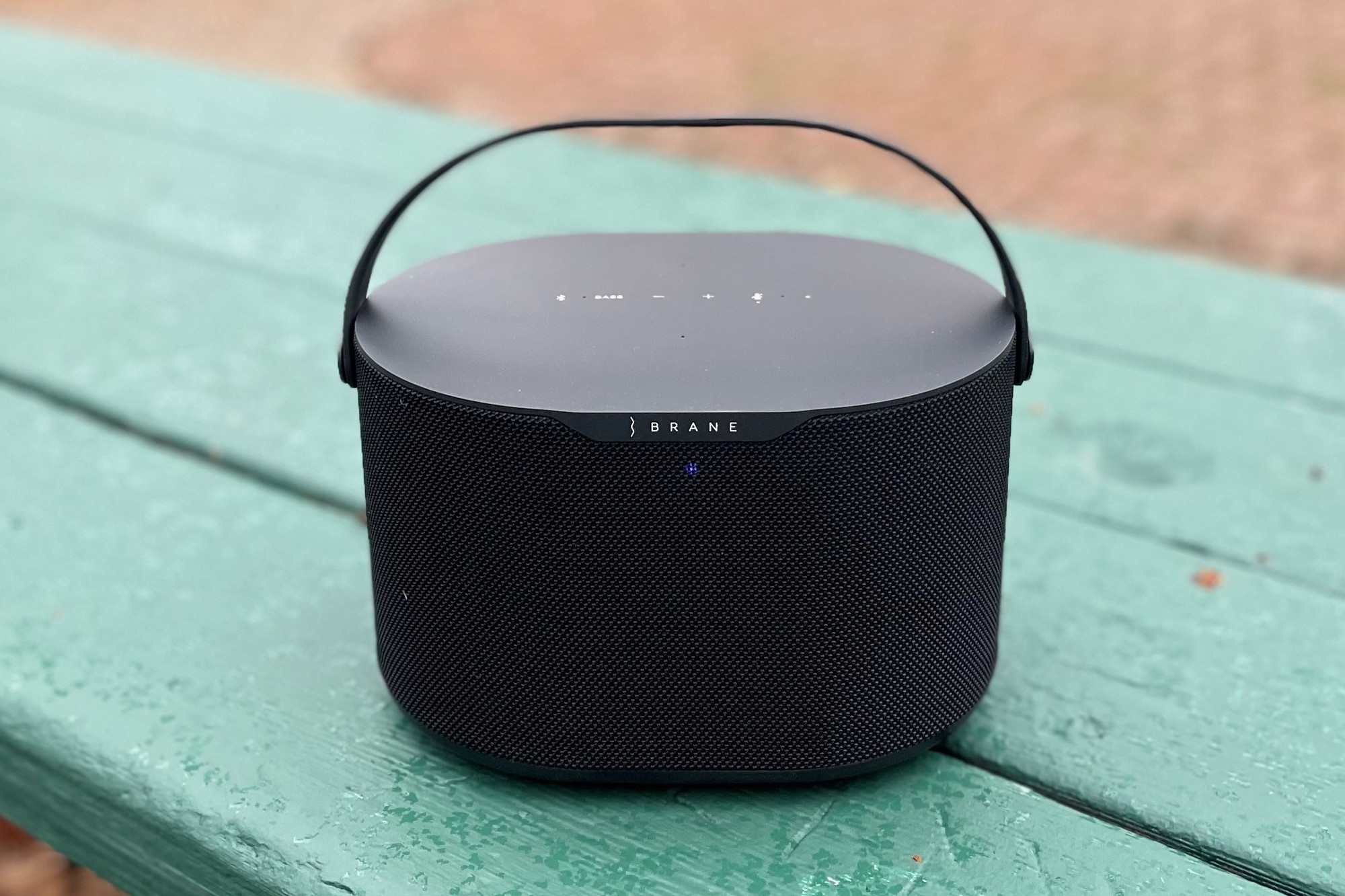
Pros
- Landmark bass design and performance
- Superior single-enclosure stereo separation
- Compact dimensions and reasonable weight render it easy to tote
Cons
- More expensive than its same-sized rivals
- The first-gen Brane app is light on service support and some features
- The Brane X’s tweeters aren’t quite as robust as its midrange drivers and subwoofer
The powerful Brane X is one of the best portable speakers you can buy—at any price. The fact that it also supports Alexa is the icing on the cake. Brane is to be congratulated for its barrier-busting R.A.D. subwoofer, which delivers mind-bending bass response given its dimensions.
JBL Authentics 500 — Best Bluetooth-capable indoor smart speaker
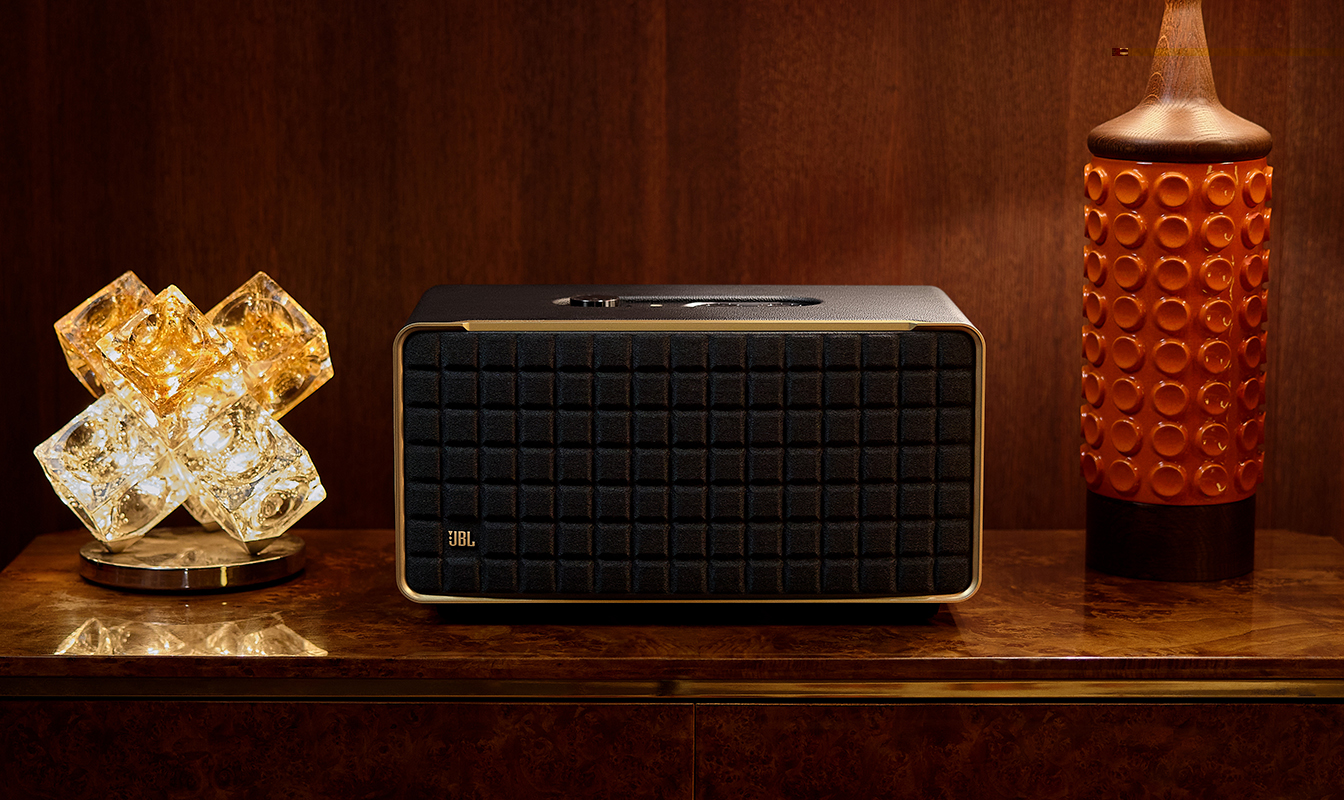
Pros
- Stylish retro design
- High-quality sound
- Deep bass reproduction
Cons
- Bulky design
- Lofty price tag
The top-of-the-line model of JBL’s new Authentics series, the Authentics 500 delivers clear, full audio along with deep bass, and its handsome retro design gives off a distinct 70s vibe. The Authentics 500 (along with its smaller siblings in the Authentics line) is also among the first speakers to allow for using both built-in Alexa and Google Assistant at the same time. The speaker’s bulky design gives us pause, however, as does its steep price tag.
Soundboks Go — Best Bluetooth speaker for big outdoor parties
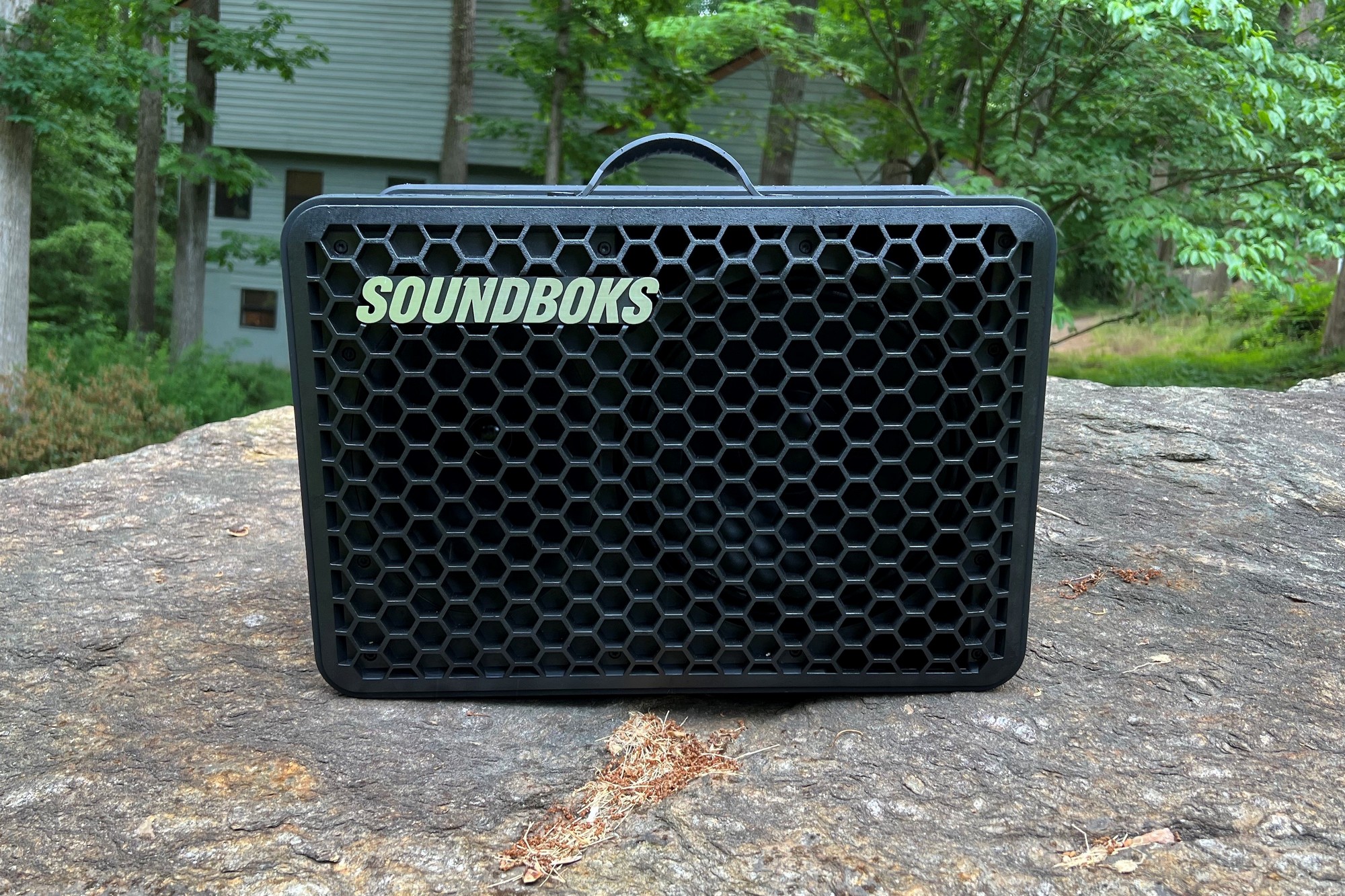
Pros
- Impressive volume without distortion
- Sturdy, weatherproof construction
- Excellent stereo sound when paired
Cons
- Initial pairing was a challenge
- Limited inputs
- No support for high-res codecs such as aptX or LDAC
The Soundboks Go isn’t the kind of grab-and-go speaker you take for a picnic in the park, but for those times when you’re looking to entertain a lot of people in a big outdoor environment, there’s nothing quite like it. Resembling an old-school PA system, this large, rugged, weatherproof, battery-powered Bluetooth speaker impressed us with its ability to get loud without distortion, and you can pair two of them for a fantastic stereo experience.
Sony SRS-XV800 — Best Bluetooth party speaker with an LED light show
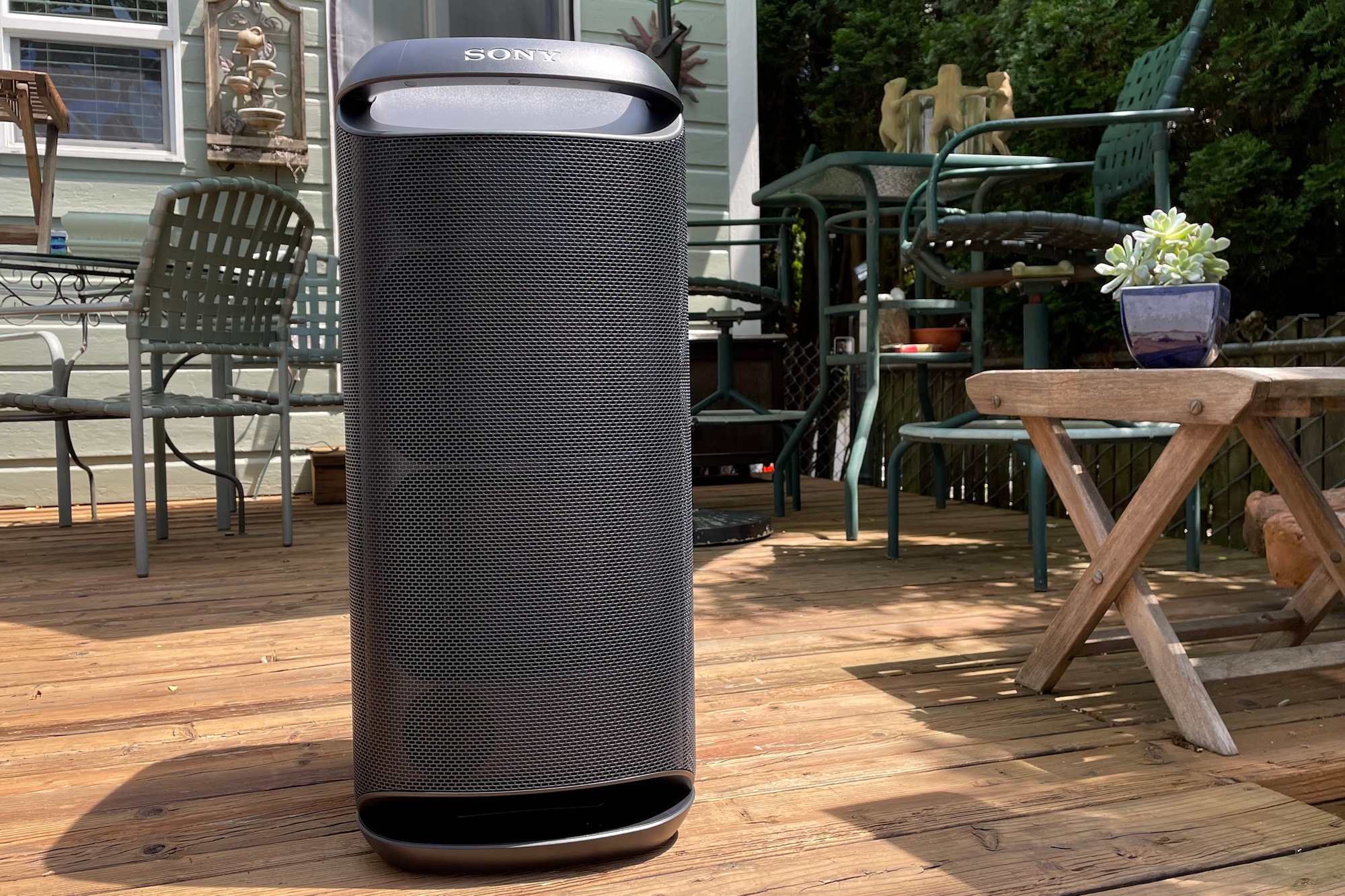
Pros
- Stylish design for being so big
- Solid build quality
- Gets very loud
- Fun LED light shows
Cons
- Loses fidelity at high volume
- Ports labeled with black text on a black background
- Relatively expensive
Sony’s SRS-XV800 is a hefty tower speaker that’s guaranteed to fill your garden or home with pumping loud music and a colorful light show when you have a party. Boasting IPX4 protection from the weather (IPX2 when horizontally oriented), it can withstand any rainstorm or poolside splash. There’s support for the AAC and LDAC Bluetooth codecs, in addition to the usual SBC, and it can also supplement your TV’s sound, thanks to its optical digital audio input. Loud isn’t necessarily synonymous with high fidelity here, but when the party gets rockin’, few are likely to notice.
Fluance Ai61 — Best Bluetooth bookshelf speakers

Pros
- Bluetooth, analog, digital, and USB connectivity
- Very good sonics
- Attractively designed
Cons
- No balanced analog audio input
Looking for high-fidelity audio on a budget? Fluance’s Ai61 replace the older Ai60 as our top pick in mid-priced Bluetooth speakers. These are bookshelf models that deliver true stereo performance, and they provide a host of connectivity options, both analog and digital—they’ll even perform as a USB audio device when connected to a personal computer. Our reviewer favorably compared them to the Yamaha studio monitors he relies on for professional mixing sessions. Highly recommended.
Sonus faber Omnia — Best high-end Bluetooth speaker
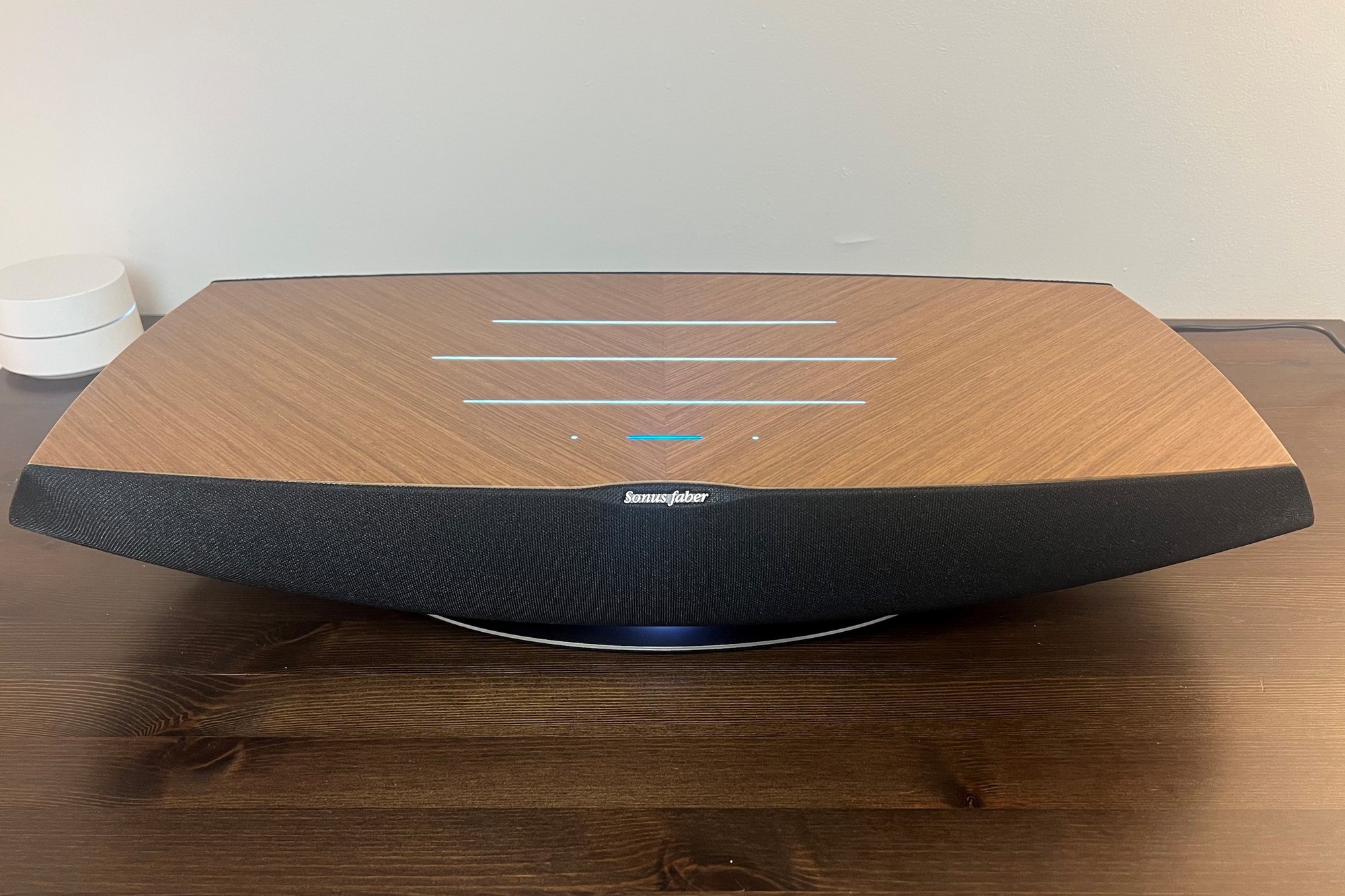
Pros
- Incredibly beautiful design
- Impeccable audio performance
- Analog and digital sources, including MM turntables
- Dual-band Wi-Fi, with Apple AirPlay and Chromecast
- Tidal Connect, Spotify Connect, and Roon Ready compatibility
Cons
- Quality and craftsmanship comes at a high price
- Remote control doesn’t rise to the same level
Boasting a beautiful mid-century-modern design aesthetic, the Sonus faber Omnia wireless speaker looks every bit as beautiful as it sounds. And while most people will connect this high-fidelity wireless audio system to their Wi-Fi network to take advantage of its Tidal Connect and Roon Ready features, Bluetooth is a great option to have when guests visit and want to play the music on their smartphones, so you don’t need to hand out your Wi-Fi credentials or concern yourself with setting up a guest network.
Q Acoustics Q Active 200 — Best price-is-no-object Bluetooth speaker
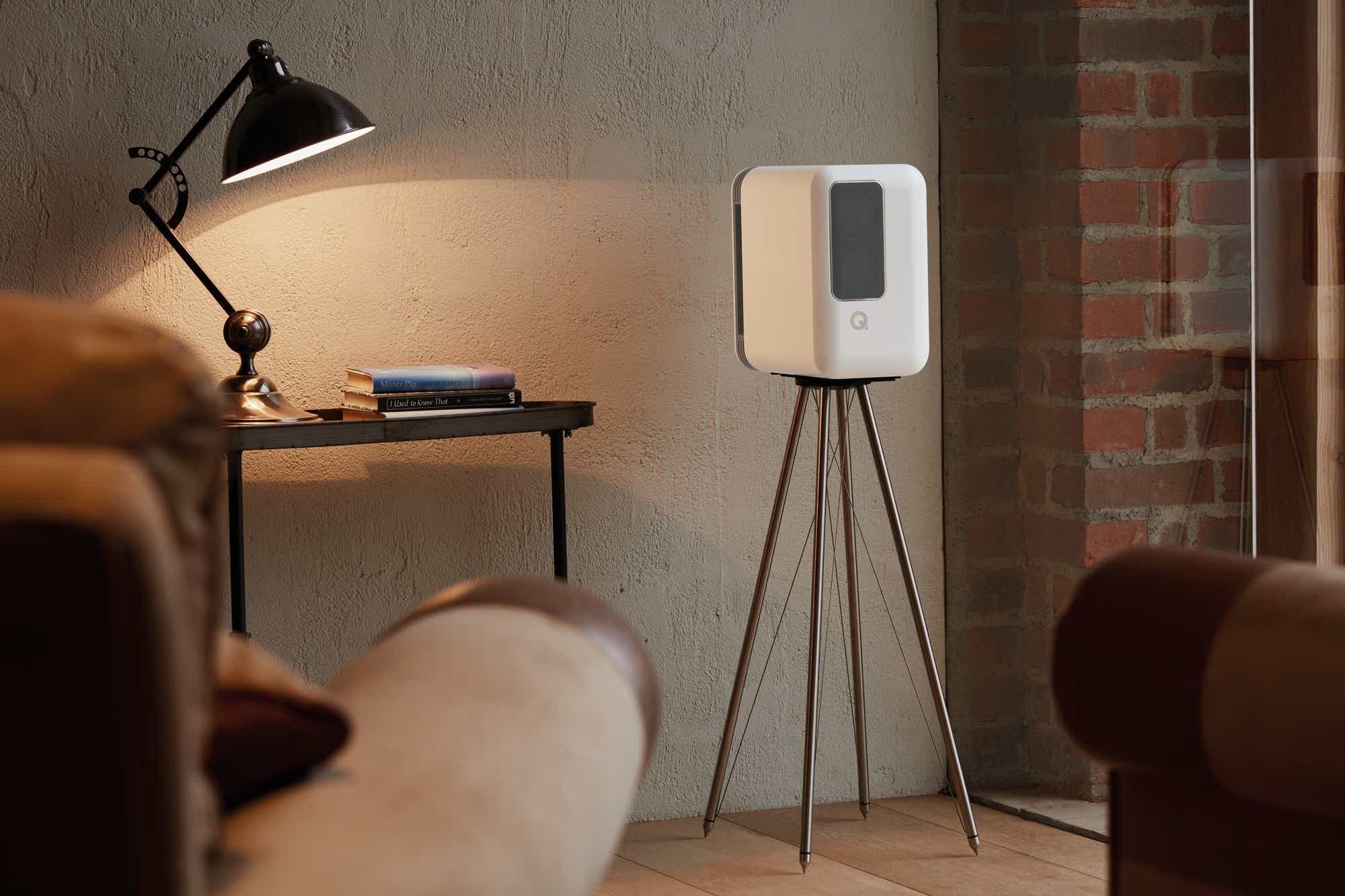
Pros
- Impeccable high-resolution audio performance
- Handles just about any audio source, analog or digital
- Roon Ready
- Clean power to spare
Cons
- Stereo only, there’s no support for any surround-sound formats
- Optional stands are optimal, but they’re also very pricey
Bluetooth support is probably the Q Acoustics Q Active 200’s most mundane feature. This full-fledged audio system consists of a pair of high-end self-powered speakers and a wireless hub that can handle any audio source you can think of. Bluetooth is just one of the Q Active 200’s many connectivity options, along with Wi-Fi, AirPlay 2, and Chromecast, which means you can incorporate the speakers into a high-fidelity multi-room audio system. Yep, the Q Active 200 is expensive, but its high price tag is justified.
Features to look for in a Bluetooth speaker
Not convinced the picks we’ve listed above are exactly right for you? This guide will help you sort through the facts, figures, and specs to determine which speaker will best meet your needs. Your first decision will be to choose between mobile and stationary form factors. The majority of Bluetooth speakers are portable because they get paired with mobile phones, but more and more manufacturers are introducing models designed to remain inside the home.
Choosing a portable model gives you the best of both worlds in some respects, but a stationary speaker is more apt to blend into your home’s decor. And while we’ve heard some pretty spectacular portable Bluetooth speakers, a plug-in model is more likely to produce the sound you’re looking for if fidelity is priority one in your book.
Here are the features you’ll want to evaluate in a Bluetooth speaker:
App support: Companion apps can provide lots of additional features to a speaker that wouldn’t be possible with just physical buttons on the speaker itself. The app might enable more than one person to be the DJ, queuing up songs to play on the speaker. An app might enable you to create customized EQ curves for different styles of music, create wake-up alarms, or power the speaker on and off remotely.
aptX support: Bluetooth audio must be squeezed down in order to stream over the airwaves, and the default codec use lossy compression that throws some of the musical data away. Qualcomm’s aptX codec is lossless, so none of the musical detail is lost in the process. The latest version of aptX–aptX Adaptive–supports streaming at up to 24-bit audio at 96kHz. But aptX must be present at both ends of the stream, in the playback device and in the speaker. Most Android devices support aptX, but Apple devices do not.
Battery life: Next to fidelity, a portable speaker’s most important feature is how long it can operate when it’s not plugged into the wall. You should expect a battery to last 10 to 20 hours, but remember that the bigger the battery, the heavier the speaker will be.
Charging options: If your speaker has a battery, it will need to be charged. Speakers that charge their batteries via a USB port are more convenient than models that require an AC adapter with a barrel connector at the end of the cable, but larger batteries might not offer that option. Some speakers also let you plug in a USB cable to tap their battery to charge your smartphone.
Mounting options and accessories: A portable speaker should be easy to take with you. While some Bluetooth speakers count on their size to make them easy to grip, others provide a lanyard, carabiner clip, or a shoulder strap. It’s even more handy when the manufacturer provides standardized sockets and accessories for mounting the speaker to an object, such as a tripod or your bike’s handlebars.
Speakerphone: Many Bluetooth speakers have built-in microphones that enable you to use the speaker as a speakerphone in concert with your smartphone. The sound quality will be much better than what you’ll get from your phone, and you’ll be able to turn the volume up much higher. This can be very handy for conference calls.
Stereo pairing: Some speakers let you create a left/right stereo pair with two speakers. This works best, of course, when the two speakers are identical. One of the most common technologies for this is known as True Wireless Stereo (TWS).
Weatherization: Portable Bluetooth speakers can be used indoors and out, so the best models provide some protection from the elements. Ideally, the manufacturer will let you know just how much protection you can expect by providing an IP (International Protection) marking. The first digit rates the enclosure’s protection from particulate matter (e.g., dust) and the second digit rates its protection against liquids.
An IP64 code, for instance, indicates that the speaker is completely protected from dust (6) and from water splashed onto it (4). The higher the numbers, the more protection you can expert. IP67, for example, means the speaker is not only immune to dust, but that it can also be submerged in up to one meter of water for up to 30 minutes. If either digit is replaced by an X, the code indicates that the speaker isn’t rated for protection from that element. This doesn’t necessarily mean that it’s not protected from particulate matter or liquids, it’s just that the manufacturer doesn’t rate its protection. IPX4, for example, means the manufacturer makes a claim for protection from liquids, but not from particulates.
Wi-Fi: Higher-priced Bluetooth speakers also provide the option of connecting to your Wi-Fi network, so that you can stream music from a NAS box and/or connect directly to streaming music sources such as Spotify, Tidal, or Qobuz. Wi-Fi streams will offer higher fidelity than Bluetooth, even if the speaker supports the aptX codec. A speaker that provides for a hardwired network connection is all the more versatile.
Wireless range: A Bluetooth speaker’s range depends on the power class of its radio, and it can vary widely and is impacted by the environment that it’s operating in. A Class 1 radio offers range of approximately 100 meters, but the number of walls between the Bluetooth source and the speaker and the type of materials in those walls will have a significant impact on range. It’s much easier for radio waves to pass through drywall than masonry, for instance. Objects in the signal path, such as large metal appliances, will reduce that range even further.
Bluetooth speakers that didn’t make the cut
The Harman Kardon Go + Play 3 has the bona fides to be a candidate for best high-end portable Bluetooth speaker–it certainly sounds great–but our reviewer was disappointed with the manufacturer’s decision not to make any ingress protection (IP) claims for the speaker. And for the price, we expected Wi-Fi connectivity in addition to Bluetooth.
There are some fine ultra-small Bluetooth speakers on the market, but the Scosche BoomCan MS is not one of them.
The dust- and water-resistant Tribit StormBox Micro 2 pumps out a lot of volume for its size and sounds surprisingly good given its $60 price point. But while this pint-sized monophonic speaker is perfect for tethering to the handlebars of a bike, it’s not really intended for serious listening sessions.
The IPX7-rated Tronsmart Splash 1 is perfect for bringing tunes to the beach or the pool, and it promises up to 24 hours of playback time. But if you’re expecting stellar sound from a $30 Bluetooth speaker, you’re barking up the wrong tree; instead, expect good audio rather than great.
The loftily priced Bang & Olufsen Beosound Level boasts a gorgeous design, swappable internal components, and best-of-breed audio fidelity. That said, it’s crazy expensive, and our reviewer was miffed by the speaker’s finicky performance on a mesh Wi-Fi network.
The Bose SoundLink Flex is one of the better-sounding monaural speakers we’ve tested, with a fair amount of boom and a compact, water-resistant design. But the similarly sized and only slightly pricier Sonos Roam has the SoundLink Flex beat with its Wi-Fi and multi-room connectivity, not to mention your choice of built-in Alexa or Google Assistant.
The small, IP67-rated Sony SRS-XB13 Bluetooth speaker is as good as it gets for its diminutive size, delivering more bass than its rivals. Still, the speaker’s bass is somewhat limited, and it can’t get all that loud, meaning it’s not much of a party speaker.
Hey, we get it: Tiny speakers are going to be lacking in bass response. But the ultraportable Tronsmart Trip was disappointedly anemic in that department.

